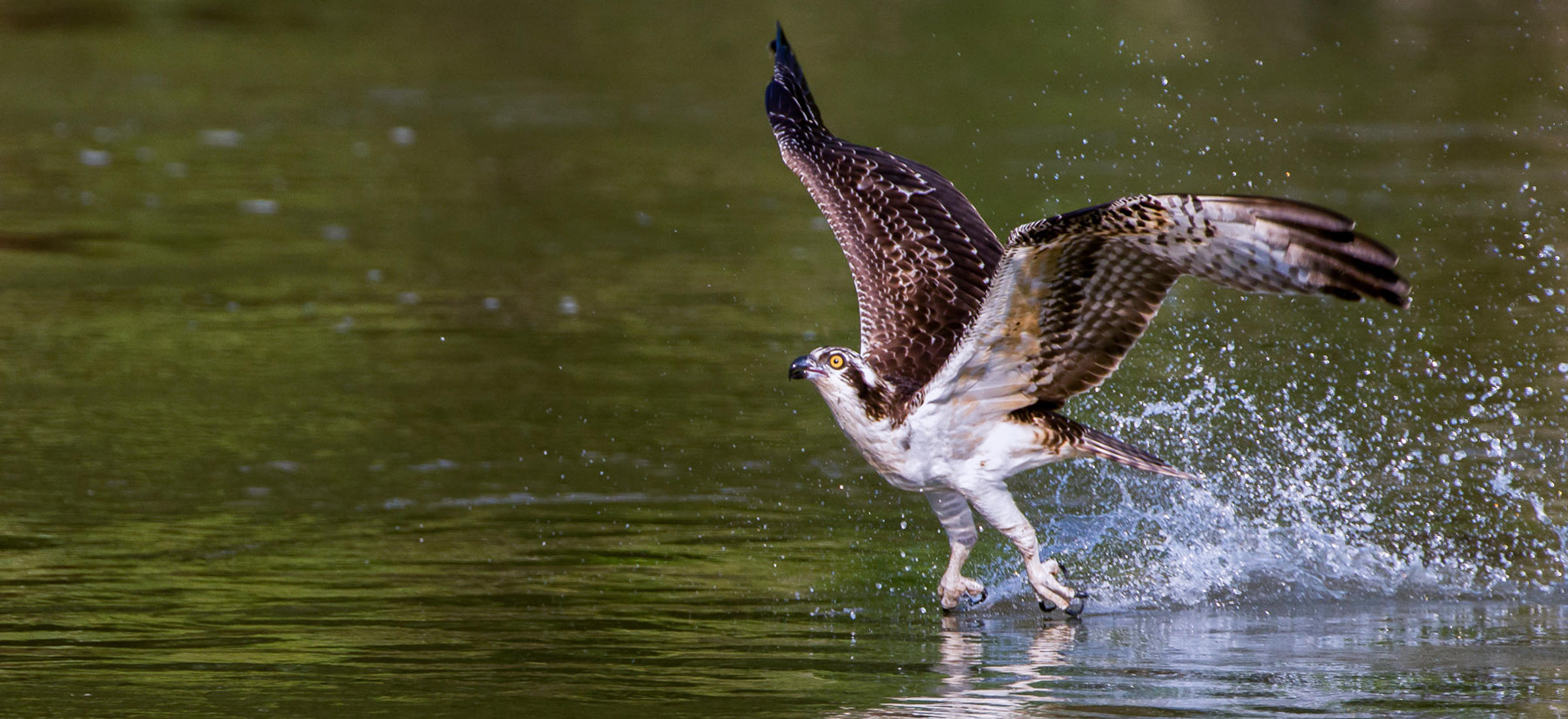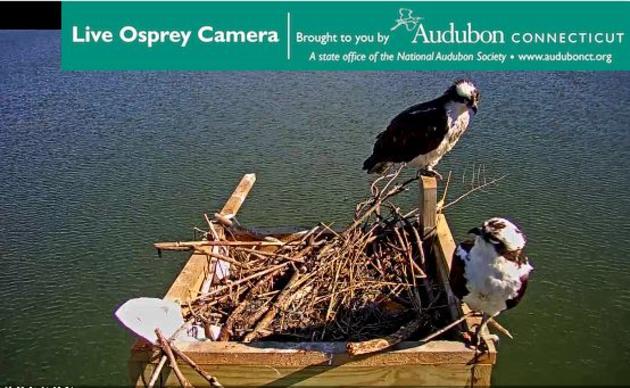Fun Facts
- The Osprey or fish hawk is found nearly worldwide.
- With their 5.5-foot wingspan, excellent vision, and sharp talons, they are very effective aerial hunters.
- Their food is almost entirely live fish such as menhaden (“bunker”), herring, and a variety of other species. Osprey hunt in both fresh and salt water.
- In Connecticut, they usually arrive in late March and lay eggs in April. The eggs (typically 3 per clutch) hatch in late April or early May.
- The male does most of the hunting with the female remaining at the nest to guard and care for the young until they are large enough to maintain their own body heat.
- The young fledge from the nest about 60 days after hatching, but continue to beg for food from their parents.
- The young gradually develop their fishing skills as they prepare to migrate south to the Caribbean and South America to spend their first 2 to 3 years of life before returning north to Connecticut to breed.
Conservation Status and History of Osprey in Connecticut
In the 1940s, Ospreys were fairly common in Connecticut, with hundreds of active nests. By the late 1960s, coastal development and the impact of DDT causing thin eggshells, reduced the Osprey population dramatically—there were fewer than 150 active nests by 1969, and the number dropped to fewer than 10 active nests in the state by 1974.
The good news is that DDT was banned in the 1970s, as a result of Rachel Carson’s landmark book Silent Spring and the concerted efforts of Audubon and other conservation organizations. Since then, there has been a steady increase in the Osprey population in Connecticut and other states where the species breeds during the summer. Another major help in this recovery has been the building of nesting platforms by Audubon chapters and many other conservation groups. There are more than 400 active nests in Connecticut today, and the number is growing.
Today the limiting factors and threats for osprey populations are:
- availability of a healthy food supply of fish
- secure nesting sites—safe from nest predators such as raccoons, and
- freedom from entanglement of both adults and nestlings in fishing line, kite string, and other trash, which adults, unfortunately, use as nesting material when building their nest.
Ways You Can Help
-
Help control trash by recycling, proper trash disposal, and taking part in beach cleanups
-
Avoid releasing balloons. They entangle wildlife (like Ospreys) and often land in the water where they can cause a danger to birds, marine mammals, fish, and sea turtles.
-
Protect the quality of our freshwater and Long Island Sound waters by practicing good watershed protection techniques such as:
-
eliminating pesticide use,
-
reducing fertilizer use,
-
cleaning up pet waste, and
-
maintaining healthy native plant cover to prevent siltation of streams, ponds, lakes, and other waterbodies.
-
-
Support Audubon Connecticut conservation/advocacy efforts to make sure that existing laws are observed and governmental programs to protect Long Island Sound are sustained.
For additional information about Ospreys in Connecticut, visit the Connecticut Department of Energy & Environmental Protection website.
More ways you can help, right now
Get Involved
There are so many great ways you can get involved with Audubon Connecticut and make a difference for both the wildlife and the people who call Connecticut home.
Visit Our Centers
Connect with our nature centers in Greenwich, Sharon, and Southbury. Each unique center offers trails, educational resources, conservation opportunities, and more.
Support Us
Through land stewardship, science, education, and advocacy, Audubon Connecticut works across the state to preserve habitat and protect bird species that are of state, national, and global concern.





